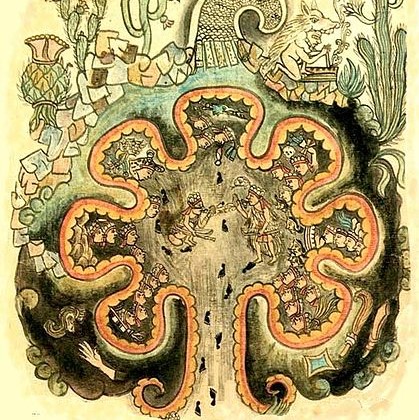Our art is based on several ethnohistorical sources dating from the colonial period, and while they each cite varying lists of the different tribal groups who participated in the migration from Aztlan to central Mexico, the Mexica who went on to found Mexico-Tenochtitlan are mentioned in all of the accounts.
This tradition of art has a long and rich history, and we have always strived to produce pieces that are both beautiful and historically memorable.
Behind all these manifestations is the one radiance, which shines through all things. The function of art is to reveal this radiance through the created object.
Quote By:- Joseph Campbell

The various descriptions of Aztlán apparently contradict each other. While some legends describe Aztlán as a paradise, the Codex Aubin says that the Aztecs were subject to a tyrannical elite called the Azteca Chicomoztoca. Guided by their priest, the Aztec fled. On the road, their god Huitzilopochtli forbade them to call themselves Azteca, telling them that they should be known as Mexica. Scholars of the 19th century—in particular Alexander von Humboldt and William H. Prescott—translated the word Azteca, as is shown in the Aubin Codex, to Aztec. Some say that the southward migration began on May 24, 1064, CE, after the Crab Nebula events from May to July 1054.
Let’s understand this through a story…
One day a man heard a bird calling to him, saying, “Go now, go now.” When the man told the chief about the bird, the chief was relieved. He had known his people must find a new land, their own land, but had waited for a sign. So the people gathered and began a long march. They followed an idol of Huitzilopochtli that the priests carried. As they went, Huitzilopochtli spoke through the priests and prepared the people for the greatness of their empire to come. He explained that they should travel until they came to a large lake; there, they should look for another sign—an eagle in a cactus. The journey took 200 years, and the people settled for a while in the Toltec capital of Tollan. Some people stayed in Tollan and some moved on. From time to time, Huitzilopochtli changed himself into a white eagle to inspire the people, and they traveled until they came to Lake Texcoco and saw a great eagle sitting on a cactus, holding a serpent. There they built Tenochtitlán, the city that became the capital and center of the Aztec empire.

